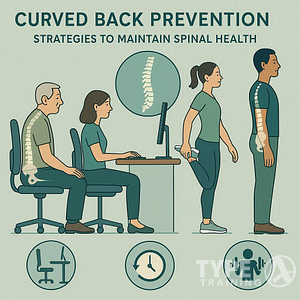Yoga is becoming increasingly popular in schools, and for good reason. Incorporating yoga into the daily routine can offer numerous benefits for students’ mental, emotional, and physical well-being. By integrating this ancient practice into the curriculum, schools can provide a holistic approach to education, fostering the development of the whole child.
Incorporating yoga in schools has been shown to improve students’ focus, memory, self-esteem, academic performance, and classroom behavior, as well as reduce anxiety and stress. As a student, you can experience a sense of calm and increase your ability to handle the various challenges that may arise in the classroom and beyond. Furthermore, yoga has physical benefits such as improved strength, flexibility, and balance, making it an ideal choice for promoting overall health.
By including yoga in the school setting, educators acknowledge the importance of nurturing not just the intellect but also the mind-body connection. Through regular practice, students can develop essential life skills such as self-awareness, stress management, and emotional resilience, helping them navigate the complexities of their educational journey with greater ease and confidence.
Popular posts:
Physical and Mental Health Benefits
Improving Focus and Concentration
Yoga can help improve your focus and concentration in school. Practicing yoga and mindfulness can lead to better mental health and cognitive performance. Specific poses, such as the Tree Pose and the Seated Forward Bend, promote balance and concentration. Incorporating deep breathing techniques into your yoga routine can also enhance focus, allowing your mind to become calm and more focused.
Enhancing Flexibility and Posture
Practicing yoga can lead to improved flexibility and posture. Yoga poses such as the Downward Dog and the Cobra Pose can help in developing your physical strength, which in turn can improve your balance, endurance, and aerobic capacity in school. By strengthening different muscle groups, yoga can significantly help in correcting posture-related issues and promoting overall physical health.
Promoting Relaxation and Stress Management
Yoga can be an effective tool for managing stress and anxiety. Engaging in yoga and mindfulness practices helps you to develop better emotion regulation and coping mechanisms. The practice of yoga can induce relaxation by incorporating poses such as the Child’s Pose and Legs-Up-the-Wall Pose. These poses, in conjunction with deep breathing exercises, help you to achieve mental and emotional relaxation, leading to better stress management in your academic and personal life.
Educational Outcomes and Classroom Environment
Boosting Academic Performance
One of the benefits of incorporating yoga into the school day is its potential to boost academic performance. Research suggests that school-based yoga may benefit students’ self-regulation — the ability to monitor and adapt their behavior, emotions, and attention in response to internal cues, the environment, and feedback from others. By improving self-regulation, students can better focus and engage in the learning process. Yoga has been shown to improve balance, strength, endurance, and aerobic capacity in children, which may contribute to enhanced cognitive abilities, such as memory and attention.
Fostering Better Classroom Behavior
Implementing a daily yoga practice in the classroom can also improve classroom behavior, as it has been reported to reduce stress and bullying behaviors. When students regularly practice yoga, it helps create a calmer and more harmonious atmosphere in the classroom.
Some common techniques used in classroom yoga include:
- Breathing exercises: incorporating deep and mindful breathing to help calm the mind.
- Physical poses: stretching and posture exercises to improve balance, strength, and flexibility.
- Relaxation techniques: guided imagery or meditation to focus the mind and relieve stress.
These activities help students develop self-awareness and self-control, leading to improved behavior and smoother classroom dynamics.
Supporting Emotional and Social Learning
Yoga in education not only provides physical and cognitive benefits but also offers valuable support for emotional and social learning. As students learn to manage their emotions through yoga and mindfulness practices, they can develop better social skills and improve their relationships with peers and teachers. Yoga can also affect students’ self-esteem and confidence, enhancing their ability to deal with challenges and setbacks in both academic and personal contexts.
To integrate yoga into your school’s curriculum, consider the following:
- Train teachers: Equip educators with the knowledge and skills to lead yoga sessions in the classroom.
- Create a safe space: Ensure the classroom environment is welcoming and supportive for all students to practice yoga.
- Schedule regular yoga sessions: Incorporate yoga into the daily routine, allowing time for students to develop and practice these skills consistently.
By incorporating the benefits of yoga into the classroom environment, you can support your students in achieving better educational outcomes and foster a more positive learning experience for everyone involved.
Integration into School Curricula
Developing a Sustainable Yoga Program
To integrate yoga into your school’s curriculum effectively, it’s essential to create a sustainable yoga program. This involves setting clear objectives, aligning the program with your school’s overall curriculum and goals, and obtaining support from the school administration, staff, and parents. One approach to integrating yoga is to add it as part of your school’s physical education classes, promoting physical and mental well-being among students.
Plan your program by considering the available time slots, class settings, and duration of each session. Also, identify student needs, such as special considerations for individuals with disabilities or specific health concerns. Developing a structured and well-planned program will ensure a smooth integration and enable the benefits of yoga to reach your students effectively.
Consider incorporating various formats, such as guided group practices, individualized instruction, or online resources to cater to diverse learning styles. This flexibility will not only improve students’ engagement but also accommodate the varying requirements of school schedules.
Teacher Training and Resources
Another critical aspect of integrating yoga into your school’s curriculum is ensuring that educators receive proper training and have access to appropriate resources. Identifying credentialed and experienced yoga instructors can significantly contribute to your program’s success. Offering regular training to your physical education teachers or having a dedicated yoga instructor within the school can make a lasting positive impact on students’ well-being.
In addition to training, provide educators with resources to further their knowledge and implementation of yoga practices. This can include access to online courses, books, or community-based workshops. Encourage teacher involvement in creating and refining the program, fostering a sense of ownership and enthusiasm. Providing support for educators allows them to develop the necessary skills to effectively teach yoga and maximize its benefits for students.
Remember, incorporating yoga into your school’s curriculum is a valuable investment in students’ physical and mental health, potentially enhancing their overall academic experience. By developing a sustainable yoga program and investing in teacher training and resources, you can effectively bring the life-enhancing practice of yoga to your students.
Frequently Asked Questions
How can incorporating yoga into school curriculums enhance student well-being?
Incorporating yoga into school curriculums can enhance student well-being by helping them develop mind-body awareness and by reducing stress. By practicing yoga, students learn to focus on breath and movement, promoting mindfulness and resilience in the face of daily challenges.
What are the psychological benefits of practicing yoga for students at various educational levels?
Practicing yoga offers psychological benefits for students at different educational levels, such as reduced stress and anxiety. These benefits can be especially helpful for students struggling with academic expectations, peer pressure, and balancing their daily lives. Additionally, yoga can improve concentration, memory, and emotional well-being, providing a strong foundation for overall mental health.
In what ways does yoga contribute to improved academic outcomes for students?
Yoga can contribute to improved academic outcomes by helping students manage stress and foster a positive school climate. Regular practice of yoga can boost resilience and improve focus, enabling students to tackle academic tasks more effectively. As a result, students may experience higher levels of academic achievement and success.
Could you elaborate on how yoga supports physical development in children and adolescents?
Yoga supports physical development in children and adolescents by enhancing flexibility, strength, and balance. The practice involves various asanas (postures) that challenge different muscle groups, facilitating overall muscular development and improved coordination. Additionally, yoga can foster better posture, core strength, and body awareness in growing bodies.
Why should schools consider integrating yoga as part of physical education programs?
Schools should consider integrating yoga into physical education programs because it offers a cost-effective, evidence-based solution to various behavioral and academic challenges. Additionally, yoga incorporates elements of mindfulness, fostering a more inclusive and diverse range of physical activities that promote holistic health. This approach supports students’ physical, mental, and emotional well-being.
What are the social and emotional advantages of yoga for the student population?
Yoga provides social and emotional advantages for the student population by promoting self-awareness, empathy, and positive school climate. By practicing yoga, students can develop a better understanding of their emotions and learn how to manage them effectively. This understanding encourages positive interactions with peers and contributes to a more supportive and inclusive learning environment.










